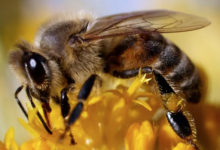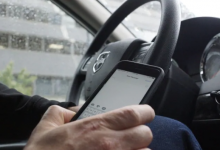How to help save the bees with your smartphone
There’s been a lot of buzz about “saving the bees” in recent years, following mass deaths among honeybees, partially blamed on pesticides, declines in bumble bee populations and scientists’ concerns that many pollinators might be headed for extinction.
This has prompted a boom in beekeeping. That involves raising domestic honeybees, which are not native to Canada. But that may actually be harmful to wild bees, who have to compete with honeybees for food. So what can you do to save the (wild) bees?
For one thing, you can take lots of pictures of them with your smartphone and upload them to citizen science apps like Bumble Bee Watch.
The photos, which are automatically accompanied by information about time and location, are then identified by bee experts. The images become part of a scientific library of information about what species of bees, and roughly how many, are found in different places — including many that scientists can’t easily get to — at various times of year.
This, in turn, helps scientists learn more about:
- Where to find and protect rare bee species.
- What kinds of plants different bees are using for food at different times of year.
- Whether some bee species are declining with time and factors such as climate change.
That data can be used to recommend whether certain species should be listed as endangered, or to decide what habitat to protect or what to plant to conserve certain species.
“Getting high-quality scientific data for scientists is, I would say, up there with habitat restoration for the most important things that we can do for conserving bees,” said York University bee researcher Sheila Colla, who created the app and accompanying website.
Bonus: It’s “easier than building a bee condo or gardening and making a native plant garden.”
It’s also easy compared to watching and photographing other animals, such as birds, since bees are generally found anywhere there are flowers and will let people get pretty close to them.
Nor do you have to be a great photographer, said Victoria MacPhail, a PhD student working with Colla. Bumblebees — even individual species of them — can be surprisingly identifiable from very blurry photos, MacPhail said.
As for other pollinators, there are similar apps — including some, like iNaturalist, that use artificial intelligence to help identify a wider range of species.
Using these nature apps benefits more than the bees and butterflies. I can tell you from personal experience that it’s a lot of fun (and kind of addictive) to learn more about the nature around you — and to amass a “collection” of amazing species on your phone to keep.








Redes Sociais - Comentários